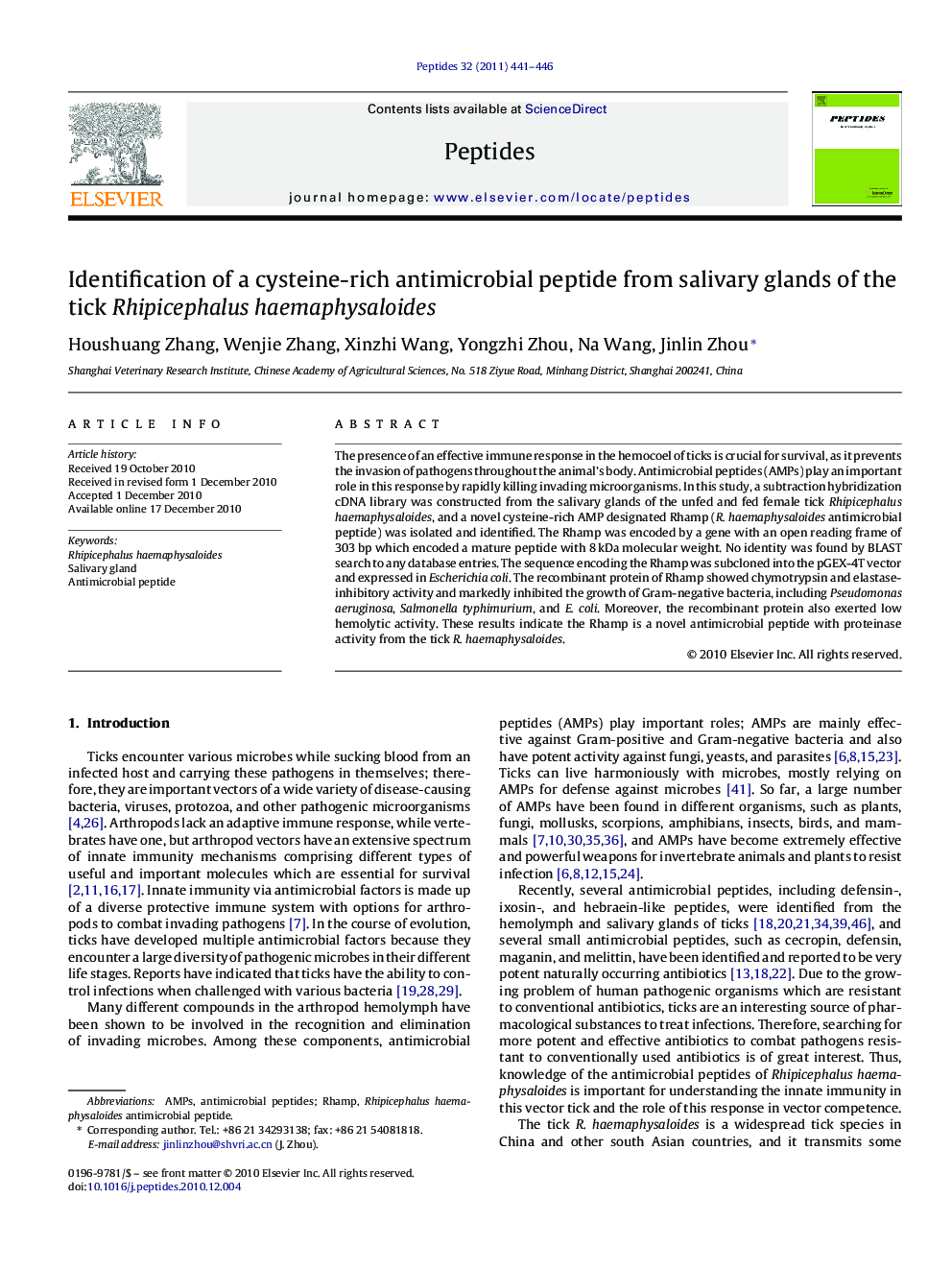| Article ID | Journal | Published Year | Pages | File Type |
|---|---|---|---|---|
| 2006397 | Peptides | 2011 | 6 Pages |
The presence of an effective immune response in the hemocoel of ticks is crucial for survival, as it prevents the invasion of pathogens throughout the animal's body. Antimicrobial peptides (AMPs) play an important role in this response by rapidly killing invading microorganisms. In this study, a subtraction hybridization cDNA library was constructed from the salivary glands of the unfed and fed female tick Rhipicephalus haemaphysaloides, and a novel cysteine-rich AMP designated Rhamp (R. haemaphysaloides antimicrobial peptide) was isolated and identified. The Rhamp was encoded by a gene with an open reading frame of 303 bp which encoded a mature peptide with 8 kDa molecular weight. No identity was found by BLAST search to any database entries. The sequence encoding the Rhamp was subcloned into the pGEX-4T vector and expressed in Escherichia coli. The recombinant protein of Rhamp showed chymotrypsin and elastase-inhibitory activity and markedly inhibited the growth of Gram-negative bacteria, including Pseudomonas aeruginosa, Salmonella typhimurium, and E. coli. Moreover, the recombinant protein also exerted low hemolytic activity. These results indicate the Rhamp is a novel antimicrobial peptide with proteinase activity from the tick R. haemaphysaloides.
